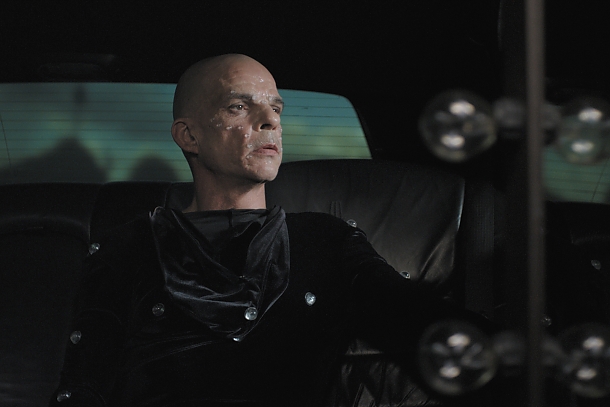
There’s a particular Parisian tradition that seems peculiar to French aesthetics involving a certain license to behave like a depraved lunatic and receive approval, endorsement, and other cultural rewards in return for this boorishness.(Many years back I tried writing about this subject, in a long review of My Life and Times with Antonin Artaud.) I suppose one very bourgeois way of describing this tendency would be to call it the aesthetics of self-indulgence combined with a gift for self-promotion, and though I don’t know French literature well enough to determine what poets might have established this trend (apart from such relatively modern figures as Baudelaire and Rimbaud), there’s no question that Jean Cocteau set down many of the terms and conditions of this tradition in cinema, along with the visiting Spaniards Luis Buñuel and Salvador Dali — including, perhaps, a special talent for hustling up various forms of patronage.
Even though not all artists with these characteristics are French, much less Parisian, it could perhaps be argued that those who are commonly celebrated for these traits are typically appreciated either by French critics (Nicole Brenez writing about Abel Ferrara) or Francophile critics (such as Adrian Martin writing about Philippe Grandrieux, among many others). Read more
From Sight and Sound (Spring 1983). -– J.R.
Wayne Wang: Chinese structures and American economies

Opening with a rousing Cantonese version of ‘Rock Around the Clock’ which is all about inflation — the rising cost of tea and rice — Wayne Wang’s remarkable, offbeat Chan is Missing neatly combines its concern about what it means to be Chinese-American with the current economic crisis. Praised in these pages by Richard Combs after its appearance at the 1982 London festival as a film that ‘answers nothing, but in a way satisfies one’s curiosity,’ this black and white mystery, about two Oriental cab drivers searching for their missing partner through San Francisco’s Chinatown, has done surprisingly well since its U.S. release last fall, especially for an independent feature costing under $20,000. A strong review from the New York Times‘ Vincent Canby, coupled with careful handling by New Yorker Films, helped to turn the film into something of a commercial sleeper. ‘After the first quarterly report, we were already in the black,’ Wang cheerfully told me on the phone from San Francisco early this year, adding that the cast and crew members, who had originally been partially paid off in points, were already just starting to get proceeds for work done in 1980. Read more
Joseph McBride, a friend, asked me to contribute a list of some sort to The Book of Movie Lists (Chicago: Contemporary Books, 1999), which he put together, and here’s what we came up with. -– J.R.
The 10 Best Jazz Films
by Jonathan Rosenbaum
What follows is a personal list of neither the best films on jazz (e.g., Jazz on A Summer’s Day) nor the best examples of jazz on film (such as the Fats Waller soundies or the 1981 Johnny Griffin at the Village Vanguard), but something more special and rarified: films in which the aesthetics of jazz and the aesthetics of film find some happy and mutually supportive meeting ground.

1.Black & Tan (DUDLEY MURPHY, 1929). Remarkable not only as an experimental narrative by the (often uncredited) main author of Ballet mécanique and as a radical political statement about to whom jazz belongs, but also as a ravishing, poetic marriage between the music of Duke Ellington and the poetics of death and orgasm. Only twenty-one minutes long, but the aesthetics of jazz and film start here.

2.When it Rains (CHARLES BURNETT, 1995). A twelve-minute miracle, and, alas, the only film on this list by a black filmmaker, this is a jazz parable about the discovery of common ‘6os roots via a John Handy album in contemporary L.A., Read more




